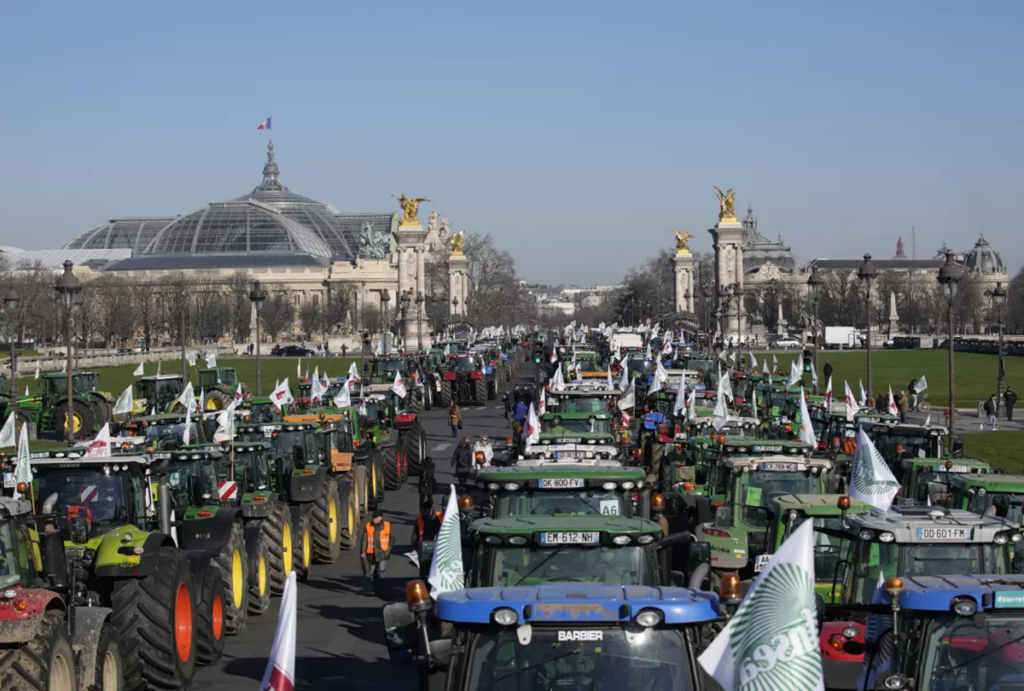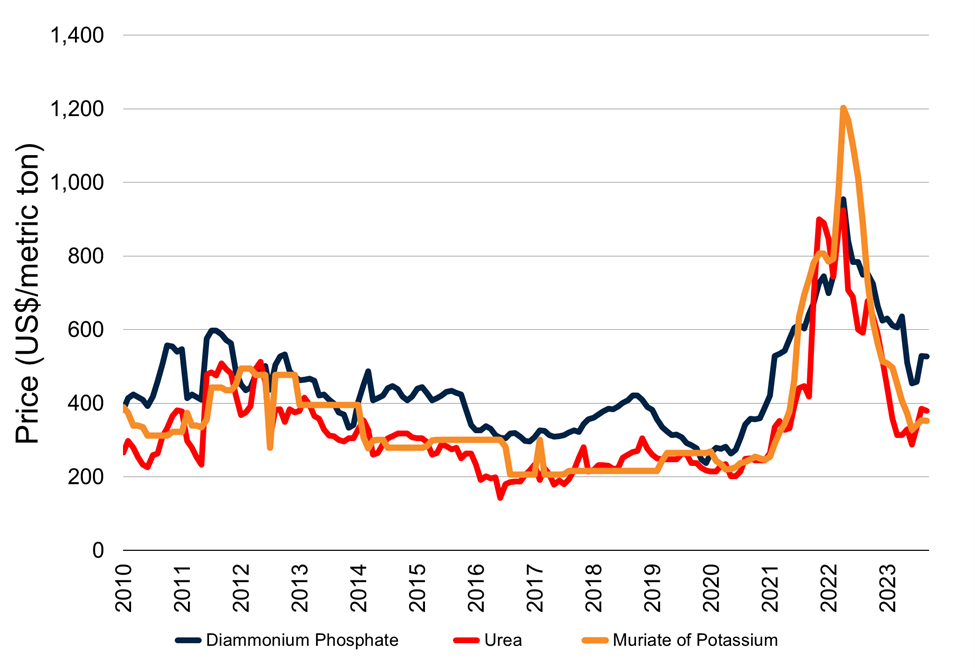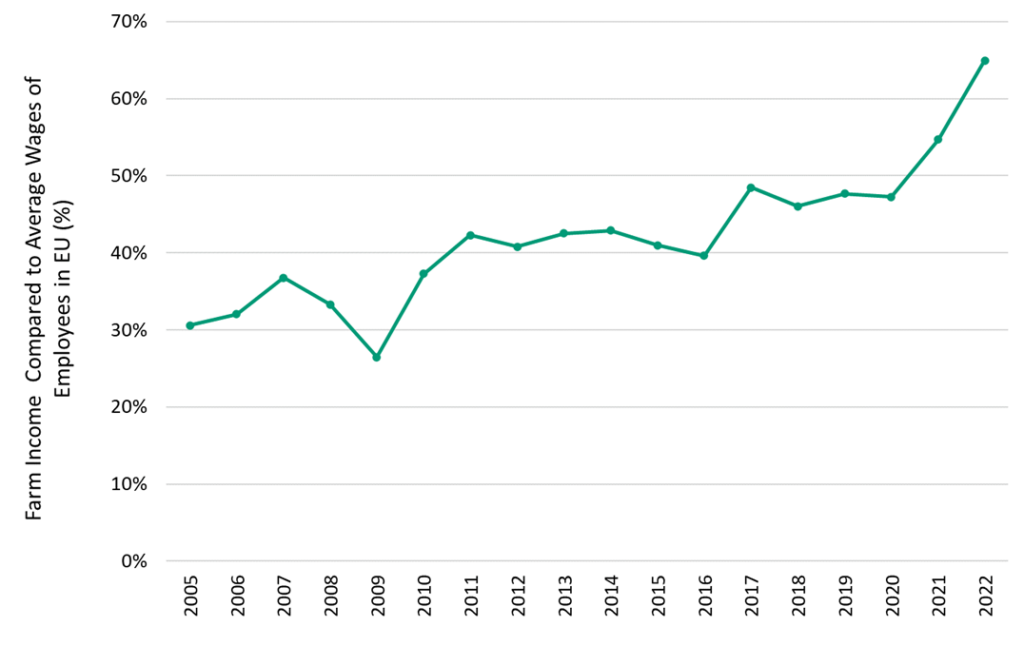
Farmers rioting in Paris courtesy of the Associated Press
The streets of Paris have been transformed from très chic to ‘tractor chic’ as farmers increasingly challenge European sustainability laws over the past few weeks.
What happened: Tractors have been piling up on autobahns as farmers protest in a number of European cities. Spain just joined the protest country list which already included Belgium, France, Germany, Greece, Italy, Lithuania, Poland, and Romania.
The concerns of the farmers vary, but there are some broad themes of the protests.
Rising costs: Since the Russia-Ukraine war began in 2022, prices for energy have increased, specifically on fuel, fertilizer, and energy. All major inputs for farmers.
Fertilizer prices, 2010-2023

Courtesy of Bloomberg, the World Bank
Although fertilizer and other commodity prices have gone down recently, the French government plans to cut back diesel tax breaks provided to farmers, threatening to reinflate fuel prices. Germany also announced plans to reduce agricultural diesel subsidies to help reduce the country’s deficit.
Reduced profits for farmers: Prices for crops initially spiked at the start of the war, but the EU has since removed tariffs on imports from Ukraine grain imports.
- Farmers have historically made less than half compared to average EU employees and their incomes are directly linked to commodity prices.
When crop prices increased in 2021 and 2022, farmers’ relative income also increased.
Farmers’ income compared to the average wage in the economy, 2005-2022

Courtesy of the European Commission Agri-food data portal
But last year’s crop prices dropped by 9 percent which is expected to impact the income of workers.
Like Gen Z, farmers are saying “no CAP”
Across Europe, farmers have had grievances with the Common Agricultural Policy (CAP) which was created to ensure food security in Europe and includes subsidies to agriculture.
Context: In the 1980s, 66 percent of the EU total budget went to this program. As of 2020, that has dropped to just 30 percent. Many feel that it isn’t enough. In 2021, frustrating farmers more, the CAP was reformed, introducing more measures to promote greener agriculture.
- Emissions from the agriculture industry been flat over the past three decades and were stay the course flat for the next two decades, according to the European Environmental Agency.
What’s next for farmers? The EU has conceded to cut back on the original environmental targets, and individual countries including France have made additional concessions around diesel subsidies and pesticide reduction targets.
Zoom out: These protests show the challenge ahead for governments as they will have to find a future for greener agriculture while balancing food security and wage security for farmers.
Share This:




